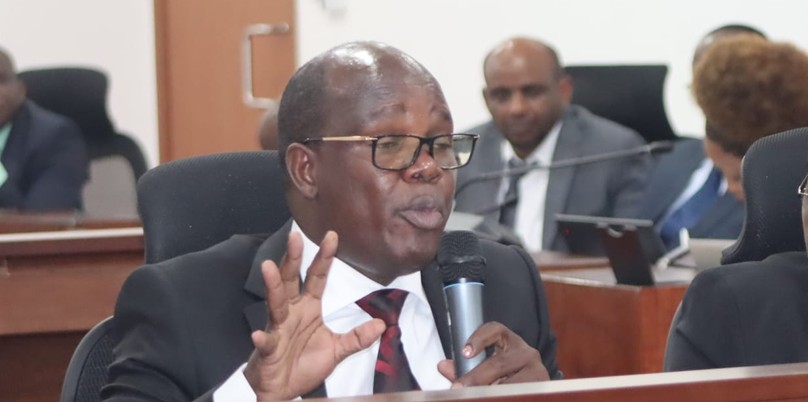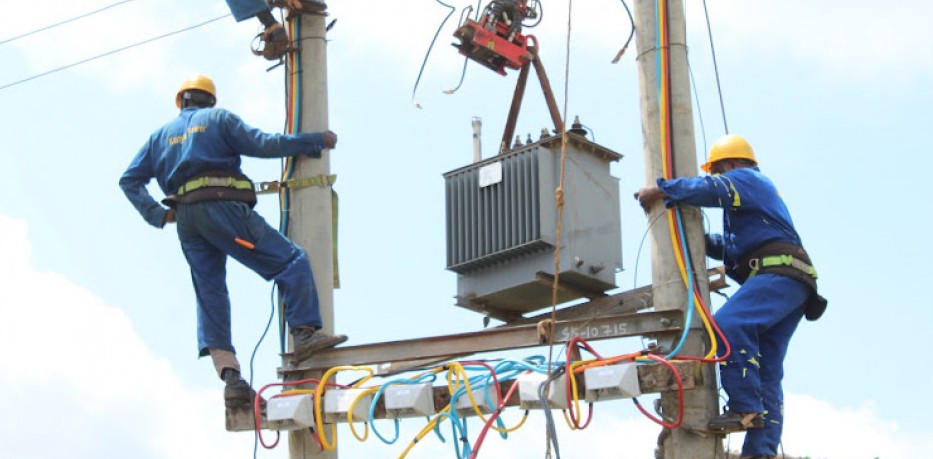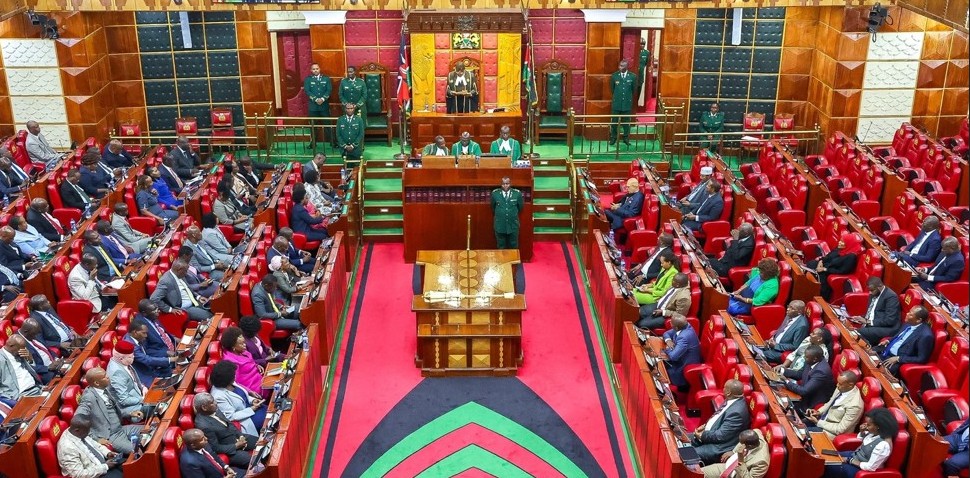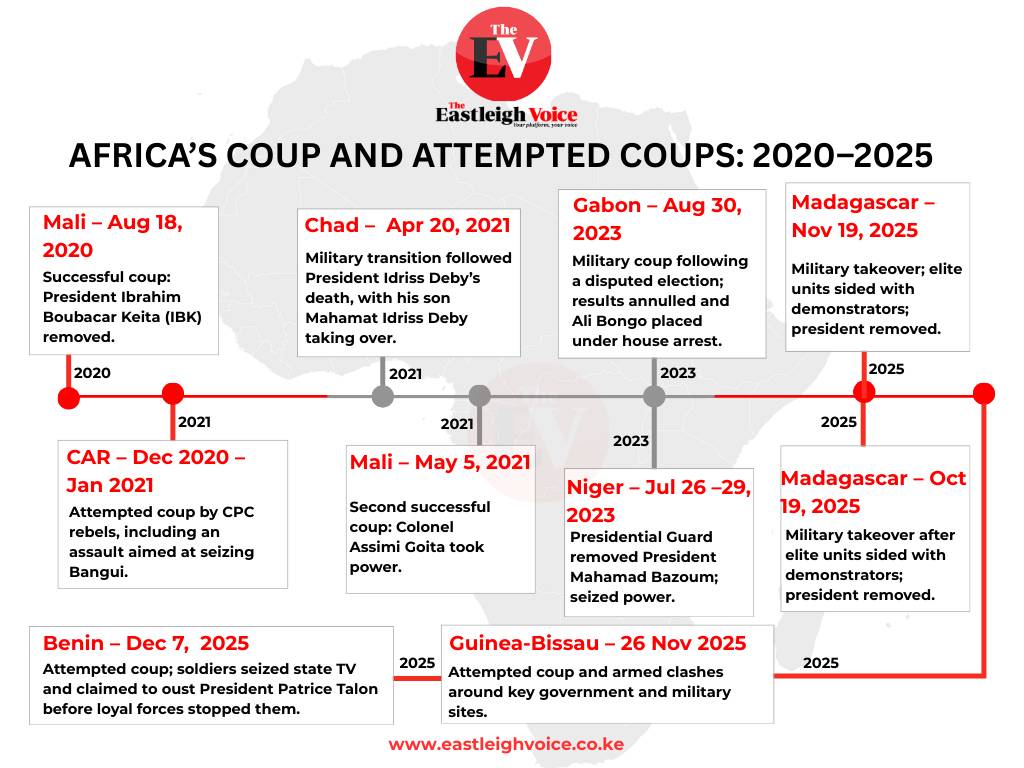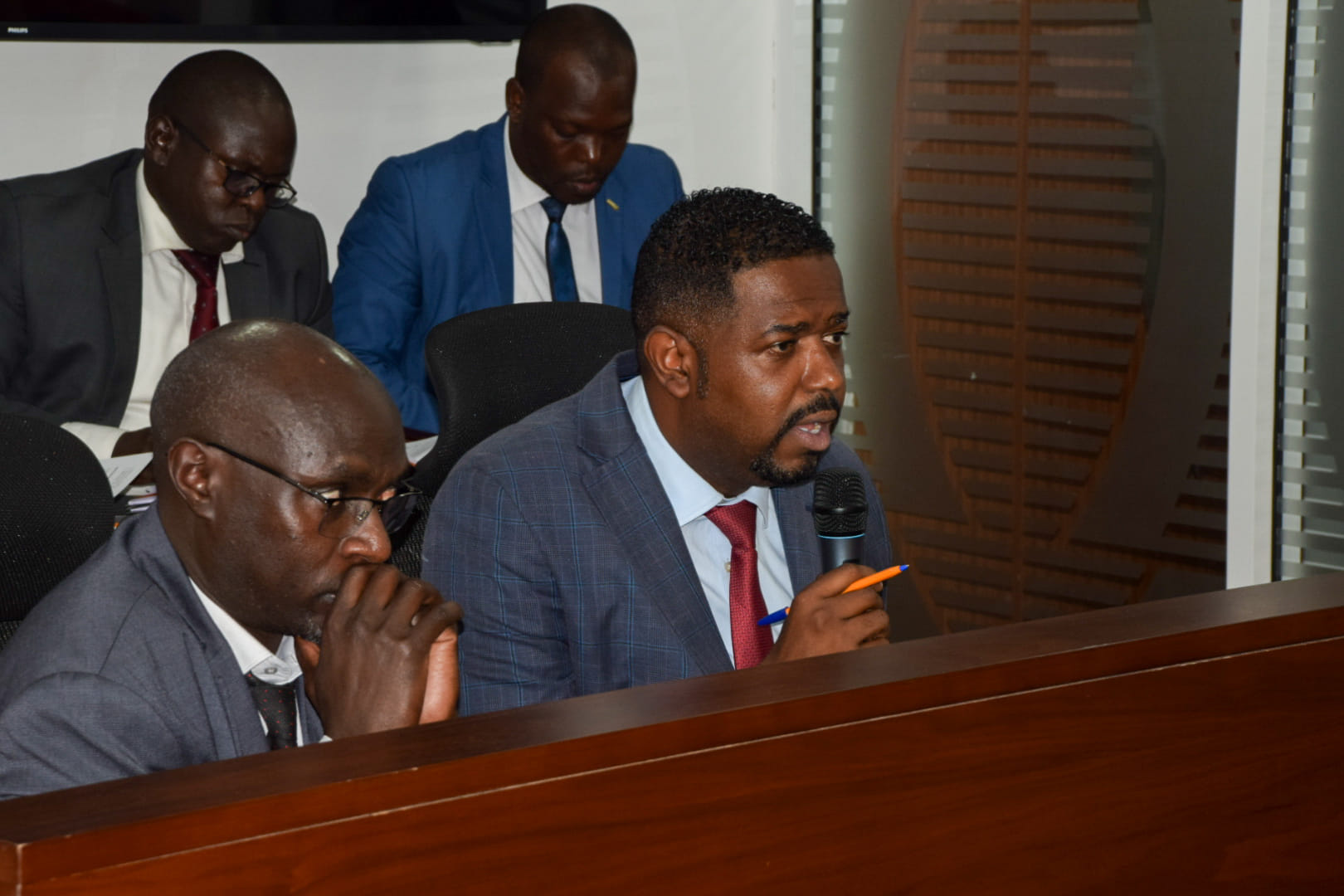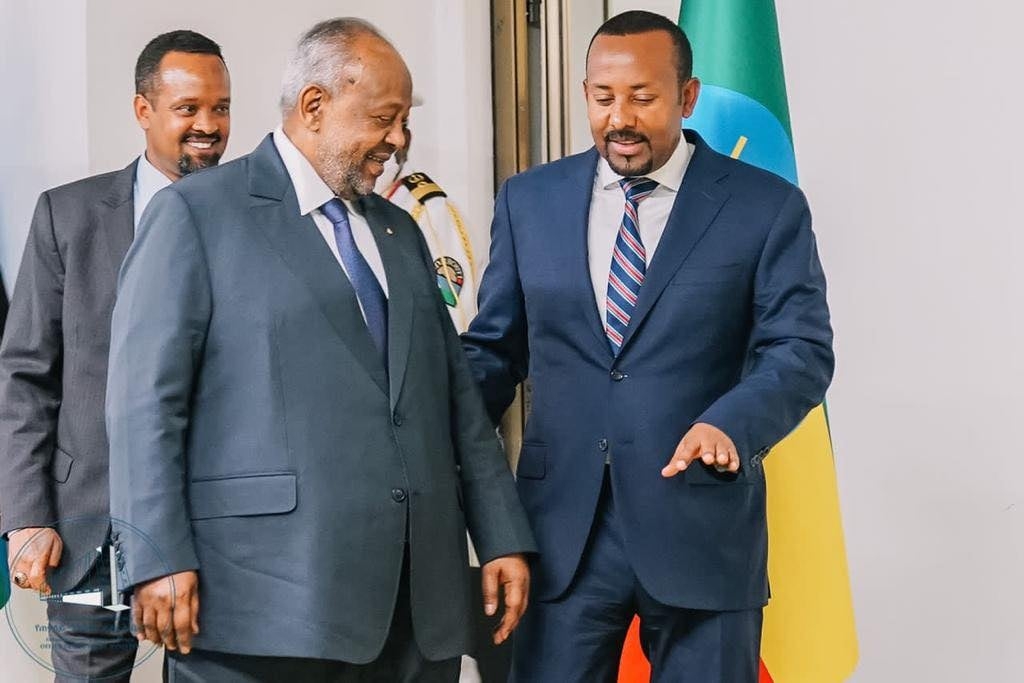How misinformation is hampering Kenya's fight against infectious diseases
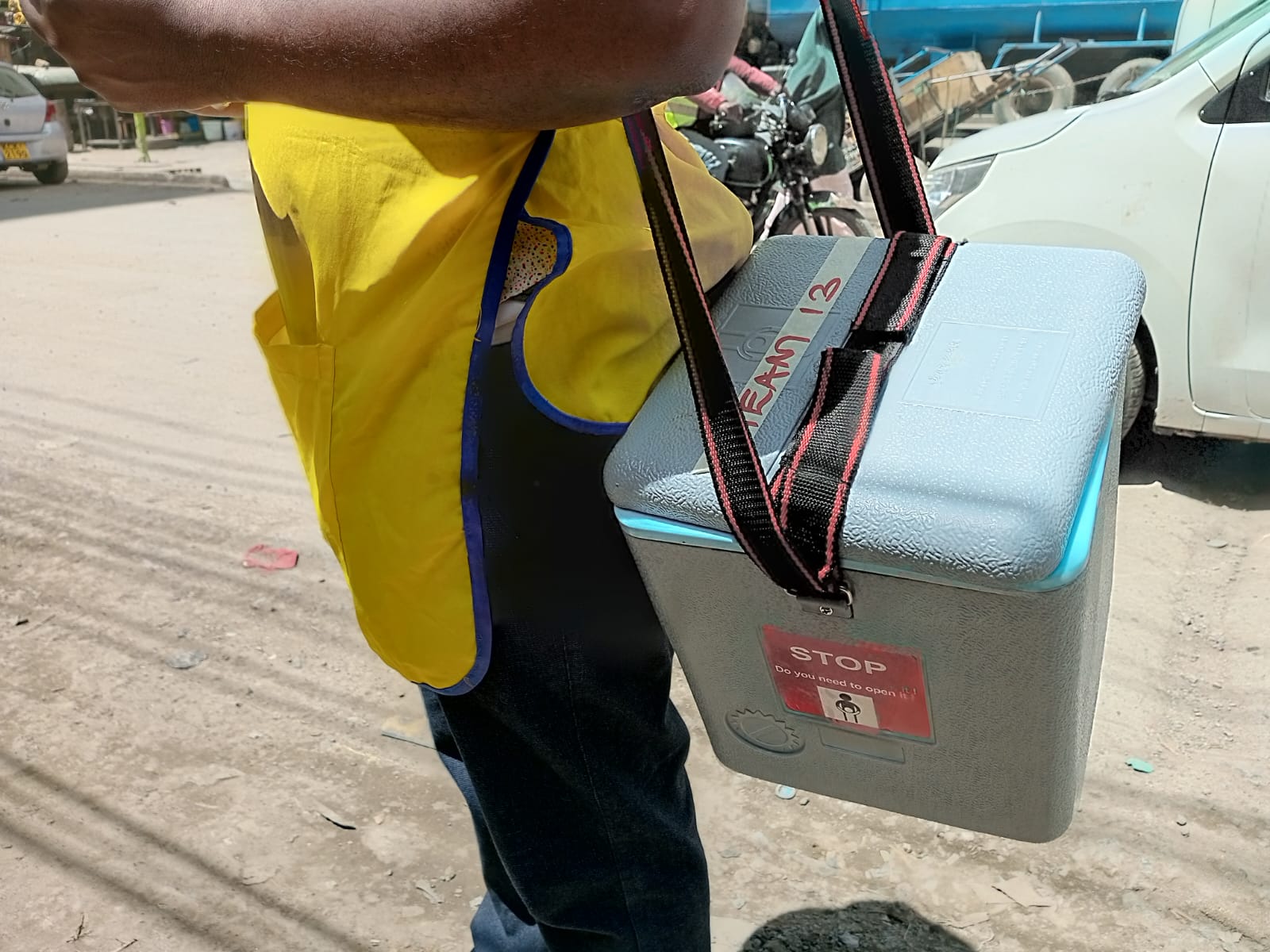
The WHO has categorically denied the existence of any GMO mosquito release in Kenya and insists that the outbreak is consistent with seasonal trends and poor drainage infrastructure. However, that has not stopped the spread of viral misinformation.
“Is the disease even real?” This question continues to echo across Kenya each time a new outbreak emerges. From COVID-19 to mpox and now chikungunya, public doubt—fueled by misinformation, conspiracy theories, and mistrust - remains one of the most persistent challenges to disease prevention and response.
In recent years, infectious diseases such as Ebola, mpox, malaria, Covid-19, and chikungunya have posed significant threats to public health, not just in Kenya but across the world. Yet even as science provides effective tools like vaccines and early detection, misinformation continues to erode public trust and slow down response efforts.
More To Read
- Kilifi County reports increase in dog bites and rabies cases
- How 'Long Covid' continues to challenge patients five years on
- Government unveils national action plan to boost hazardous threat response
- Long Covid’s lasting damage: Why many South Africans still struggle with fatigue, anxiety and memory loss
- Climate change is making the world sick: COP30 report links climate change to new disease hotspots
- Viral infections linked to higher risk of heart attacks and strokes
During the COVID-19 pandemic, Kenya experienced a flood of false claims that complicated the national response. Some citizens believed the virus was a hoax or a foreign ploy. These beliefs only began to shift when Kenyans - public figures and everyday citizens - began to share their personal stories of illness, hospitalisation, and loss.
According to the World Health Organisation (WHO), Covid-19 was caused by the SARS-CoV-2 virus, believed to have originated through a natural spillover event involving animals in Wuhan, China. Still, limited transparency and delayed data sharing - particularly from China - sparked global speculation and conspiracy theories that persist to this day.
In Kenya, vaccine misinformation took on a life of its own. Myths about microchips, infertility, and foreign experiments spread rapidly across social media platforms. “We should teach our kids never to trust vaccines - let them fear them instead,” reads one post. Others claimed, “Create a problem, pretend to solve it, and get rich.”
The Ministry of Health (MoH) launched public vaccination campaigns during Covid-19, bringing in political leaders, medical professionals, and community influencers to lead by example. Yet in many parts of the country - especially rural areas - scepticism remained high.
At the same time, traditional remedies like mwarubaini and steam inhalation gained popularity. While culturally important and comforting to many, health experts made it clear these methods could not prevent or cure Covid-19.
Other misinformation falsely claimed the virus only affected white people or was somehow caused by 5G technology. These narratives were debunked through expert interviews, community outreach, and clear health messaging.
Globally, more than 7 million deaths have been officially recorded from Covid-19, though WHO estimates suggest the true toll may be closer to 15 million. In Africa, where death reporting systems are often limited, official counts remain low. In Kenya, just over 5,700 deaths have been recorded - but the real number is likely higher, as many died at home, never tested or diagnosed.
Now, a similar cycle is repeating itself with mpox and chikungunya.
In the case of mpox, the lack of publicly known patient testimonials has deepened public doubt. Few people have come forward to say they contracted the virus, and no families have publicly shared their experiences. This silence has fueled suspicions. “If mpox is real, where are the people who’ve had it?” one person questioned. Another added, “I’ve never seen anyone with mpox, and yet we keep hearing about cases—what aren’t they telling us?”
This absence of visible patient stories makes the disease feel distant and abstract to many, allowing conspiracy theories to thrive. Some believe Mpox is being used as a government tool to distract from political unrest or suppress public gatherings. “You’ve seen Kenya use mpox false alarms to derail maandamano [protests]. You can think the rest,” wrote one user on X (formerly Twitter).
Now, with chikungunya re-emerging in Mombasa, scepticism has intensified. According to the WHO and the Africa Infodemic Response Alliance (AIRA), 614 cases have been confirmed in Mombasa County across all six sub-counties, with Mvita, Likoni, Changamwe, and Kisauni hardest hit. The virus, spread by Aedes aegypti mosquitoes, thrives in stagnant water—especially common during the rainy season.
No deaths have been recorded, and no new cases were reported in the past week. Still, public suspicion is growing. Posts claiming the disease is “engineered” or that “GMO mosquitoes” were released in Kenya have gained traction online. “Chikungunya and dengue are doing exactly what they were programmed to do,” one post read. Another warned, “This is bio-warfare! They’ll sell millions of vaccine doses after scaring the public.”
The WHO has categorically denied the existence of any GMO mosquito release in Kenya and insists that the outbreak is consistent with seasonal trends and poor drainage infrastructure. However, that has not stopped the spread of viral misinformation.
In the absence of trust, people delay seeking treatment, reject medical advice, or turn to ineffective and sometimes dangerous home remedies. Health workers have reported growing resistance in affected communities, particularly when no visible evidence - like firsthand stories - validates official warnings.
Most of the recent chikungunya infections have occurred among truck drivers, their close contacts, and children. Out of 240 nationwide cases, 99 have been reported in Mombasa alone. Yet local health officials say the biggest challenge isn’t the virus itself - it’s convincing people that it exists.
Health experts warn that prevention is still the strongest tool in public health. This includes vaccination, sanitation, vector control, health education, and early detection. But, prevention only works when communities trust the systems behind it.
The WHO recommends stronger collaboration between the Ministry of Health (MoH), trusted community groups, and the media to issue coordinated messages, track evolving misinformation, and clarify key facts. This includes highlighting that no vaccine currently exists for Chikungunya, and prevention must focus on mosquito control and personal protection.
Without clear communication and visible testimonials, every new outbreak risks being dismissed as a hoax. And without trust, even the best health response may fail.
Diseases like mpox, chikungunya, dengue fever, and Covid-19 have increasingly affected communities worldwide. Though each disease is caused by a different virus and spreads in different ways, all pose serious health risks.
According to the WHO, mpox is caused by the Mpox virus, which was first discovered in monkeys in 1958 and in humans in the Democratic Republic of Congo (DRC) in 1970.
Mpox spreads through close contact with an infected person, animal, or contaminated materials. It can be transmitted via skin lesions, bodily fluids, or respiratory droplets during prolonged contact.
There are two main clades: Clade I (Central African), which is more severe, and Clade II (West African), which is milder and was behind the 2022 multi-country outbreak. People at higher risk include those with close physical contact with cases, especially during sexual activity, individuals with weakened immune systems, and those travelling to or living in endemic areas.
Chikungunya refers to the painful joint swelling it causes. It was first identified in Tanzania in 1952 and is spread by Aedes aegypti and Aedes albopictus mosquitoes, according to the Centre for Disease Control and Prevention (CDC). These mosquitoes bite during the day.
Chikungunya is not transmitted person-to-person. Risk is higher in tropical regions where mosquito control is limited, especially for people active outdoors without protection. Outbreaks often occur in areas with little prior exposure, where immunity is low.
Dengue fever, also spread by Aedes mosquitoes, is caused by the dengue virus (DENV), which has four distinct types (DENV-1 to DENV-4). As per the WHO, the virus likely evolved centuries ago but became a global health threat in the 20th century. Infection with one type gives lifelong immunity to that type - but not to the others.
In fact, according to research published in The Lancet, a second infection with a different type increases the risk of severe complications such as dengue hemorrhagic fever. Risk is highest in urban and semi-urban tropical areas, particularly where mosquito populations thrive due to poor sanitation and stagnant water. Rarely, dengue can spread via blood transfusions or organ transplants.
Covid-19, caused by the SARS-CoV-2 coronavirus, emerged in late 2019 in Wuhan, China, and quickly escalated into a pandemic. Covid-19 primarily spreads through respiratory droplets and aerosols from coughing, sneezing, or talking, and through contact with contaminated surfaces.
It does not involve insect vectors. People are more vulnerable in crowded indoor spaces, areas with poor ventilation, and among unvaccinated or immunocompromised populations. Risk is also higher for older adults and individuals with chronic illnesses like diabetes or heart disease.
Though different, these four diseases all demand vigilance. While mpox and Covid-19 are spread from human to human, chikungunya and dengue are spread by mosquito vectors.
Top Stories Today



